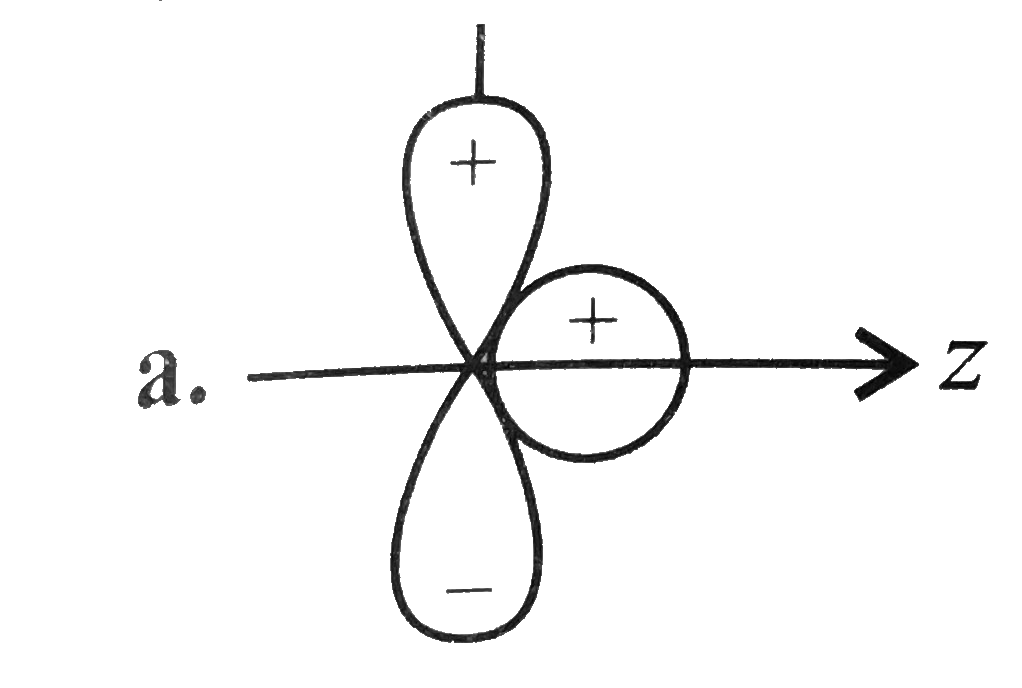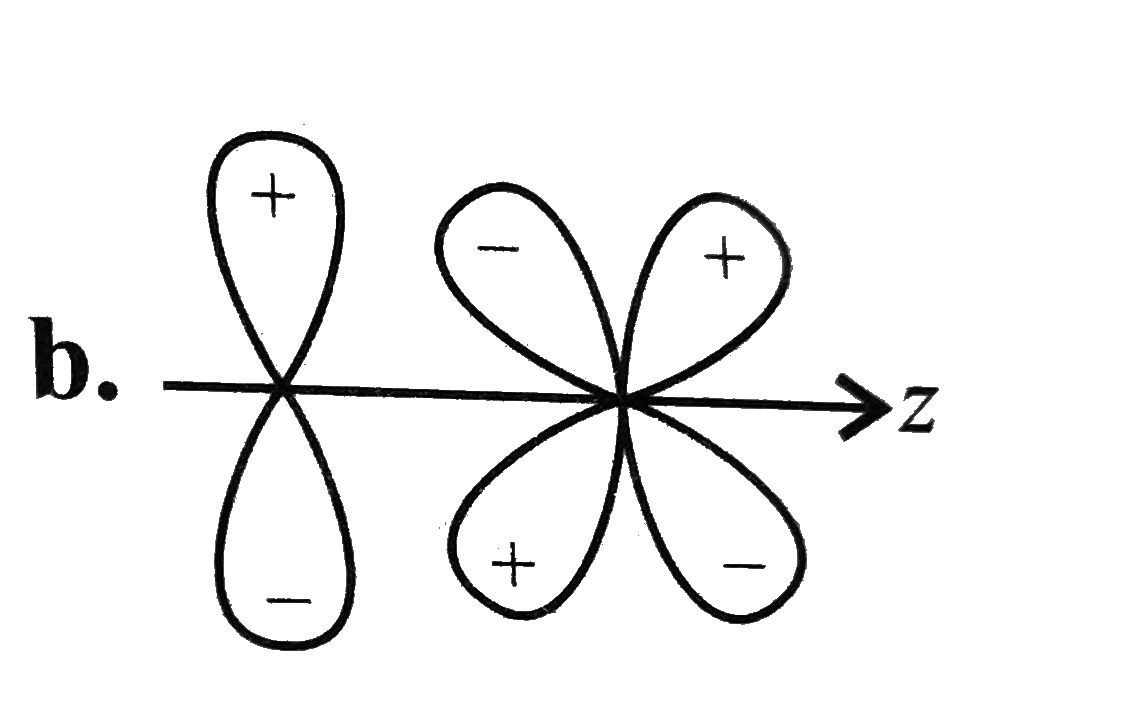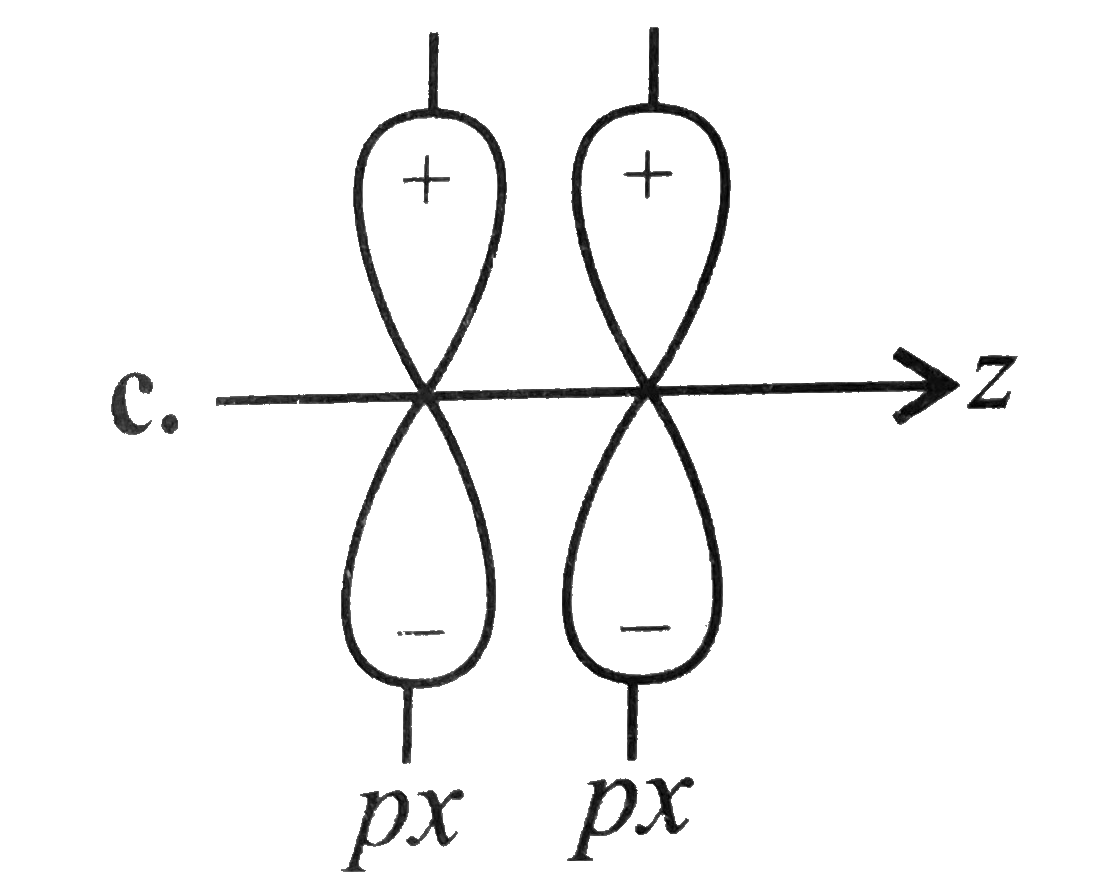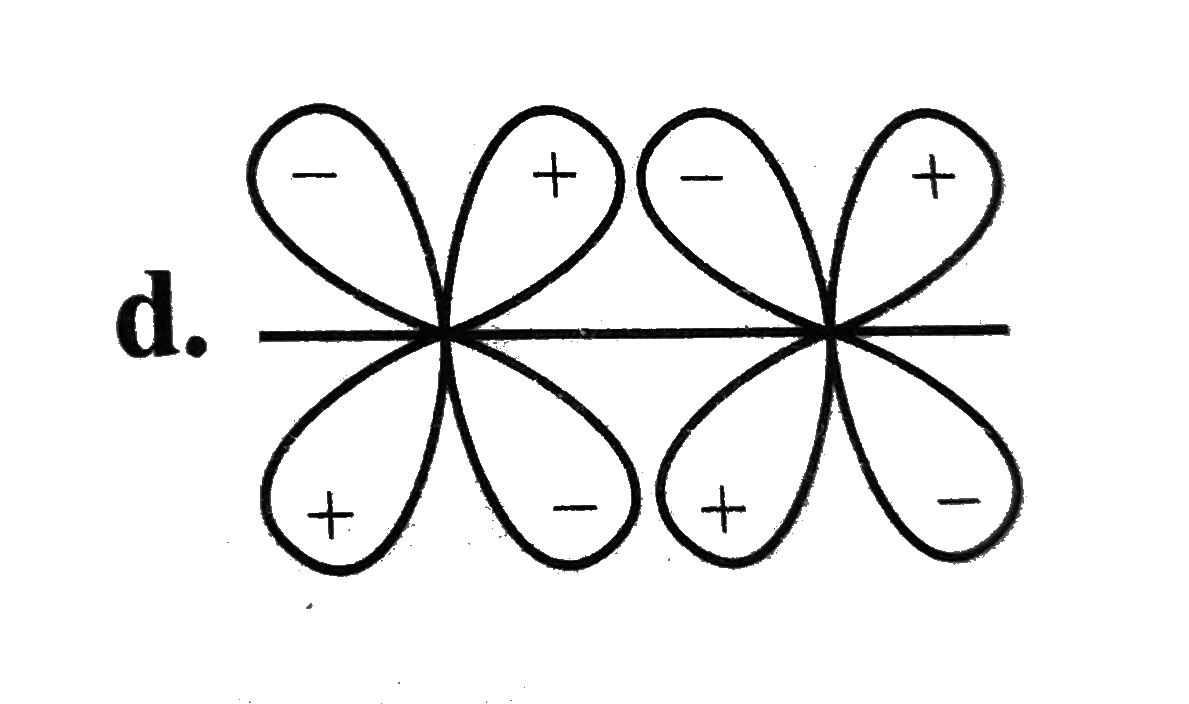Which of the following is a positive overlap which leads to bonding ? .




The correct Answer is:C
To determine which of the given options represents a positive overlap that leads to bonding, we can analyze each option based on the principles of orbital overlap in chemical bonding.
1. Understand Orbital Overlap:
- In chemical bonding, the overlap of atomic orbitals is crucial. Overlap can be positive, negative, or zero.
- Positive overlap occurs when orbitals with similar signs (e.g., both positive or both negative) overlap, leading to constructive interference and the formation of a bond.
2. Analyze Option A:
- Option A shows an overlap between an s orbital and a p orbital.
- Here, the overlap is described as zero overlap because there are two types of interferences: constructive (plus with plus) and destructive (plus with minus).
- Conclusion: No bond is formed in this case.
3. Analyze Option B:
- Option B involves a p orbital and a d orbital.
- The overlap here is characterized as negative overlap since the signs are opposite (plus overlaps with minus).
- Conclusion: This also does not lead to bonding.
4. Analyze Option C:
- Option C shows the overlap between two p orbitals (Px with Px).
- Both lobes overlap positively (plus with plus and minus with minus), indicating a positive overlap.
- Conclusion: This is a positive overlap and leads to bonding.
5. Analyze Option D:
- Option D consists of two d orbitals.
- The overlap is described as negative overlap (plus with minus and minus with plus).
- Conclusion: This does not lead to bonding.
6. Final Answer:
- Based on the analysis, the only option that represents a positive overlap leading to bonding is Option C.
- In chemical bonding, the overlap of atomic orbitals is crucial. Overlap can be positive, negative, or zero.
- Positive overlap occurs when orbitals with similar signs (e.g., both positive or both negative) overlap, leading to constructive interference and the formation of a bond.
- Option A shows an overlap between an s orbital and a p orbital.
- Here, the overlap is described as zero overlap because there are two types of interferences: constructive (plus with plus) and destructive (plus with minus).
- Conclusion: No bond is formed in this case.
- Option B involves a p orbital and a d orbital.
- The overlap here is characterized as negative overlap since the signs are opposite (plus overlaps with minus).
- Conclusion: This also does not lead to bonding.
- Option C shows the overlap between two p orbitals (Px with Px).
- Both lobes overlap positively (plus with plus and minus with minus), indicating a positive overlap.
- Conclusion: This is a positive overlap and leads to bonding.
- Option D consists of two d orbitals.
- The overlap is described as negative overlap (plus with minus and minus with plus).
- Conclusion: This does not lead to bonding.
- Based on the analysis, the only option that represents a positive overlap leading to bonding is Option C.
Topper's Solved these Questions
- CHEMICAL BONDING AND MOLECULAR STRUCTUREBOOK - CENGAGE CHEMISTRY ENGLISHCHAPTER - CHEMICAL BONDING AND MOLECULAR STRUCTUREEXERCISE - Exercises Single Correct (Dipole Moment)
16 Videos
- CHEMICAL BONDING AND MOLECULAR STRUCTUREBOOK - CENGAGE CHEMISTRY ENGLISHCHAPTER - CHEMICAL BONDING AND MOLECULAR STRUCTUREEXERCISE - Exercises Single Correct (Hybridisation)
33 Videos
- CHEMICAL BONDING AND MOLECULAR STRUCTUREBOOK - CENGAGE CHEMISTRY ENGLISHCHAPTER - CHEMICAL BONDING AND MOLECULAR STRUCTUREEXERCISE - Exercises Multiple Correct (Miscellaneous)
10 Videos
- ATOMIC STRUCTUREBOOK - CENGAGE CHEMISTRY ENGLISHCHAPTER - ATOMIC STRUCTUREEXERCISE - Concept Applicationexercise(4.3)
19 Videos
- CHEMICAL EQUILIBRIUMBOOK - CENGAGE CHEMISTRY ENGLISHCHAPTER - CHEMICAL EQUILIBRIUMEXERCISE - Subjective type
1 Videos
Similar Questions
Which of the following is a zero overlap which leads to non-bonding?
View SolutionWhich of the following is not an ore of lead?
View SolutionWhich of the following bonds is most polar ?
View SolutionWhich of the following leads to bonding?
View SolutionWhich of the following leads to bonding?
View SolutionWhich of the following abnormalities of the eye can lead to blindness?
View SolutionWhich of the following is used for the treatment of lead poisoning?
View SolutionWhich of the following bonds will be most polar?
View SolutionWhich of the following is a s-bonded organometallic?
View SolutionWhich of the following is stablised by overlapping of p-orbitals?
View Solution
